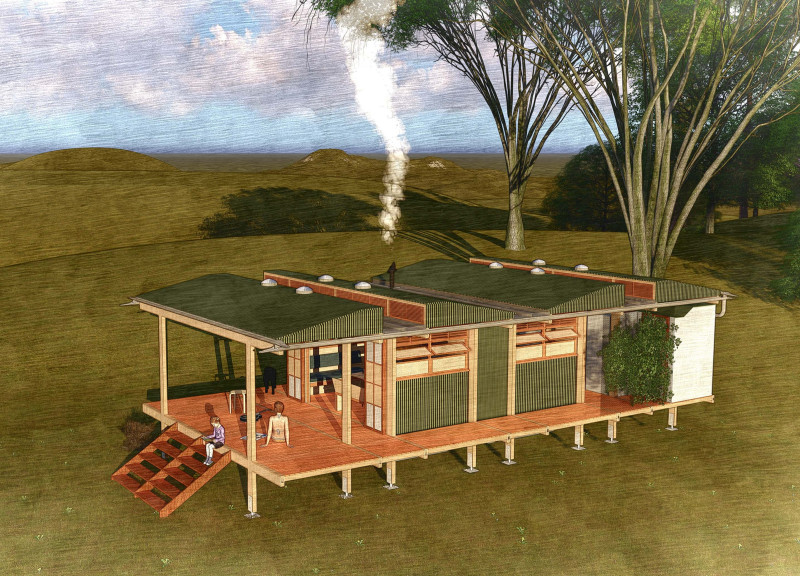5 key facts about this project
From the outset, the architectural design showcases a commitment to sustainability and contextual relevance. The materials chosen for the project are a blend of modern and traditional elements, including concrete, glass, wood, and steel. Each material was selected not only for its structural capabilities but also for its ability to contribute to the overall ambiance of the space. For instance, the extensive use of glass invites natural light into the interiors, creating an inviting atmosphere while minimizing energy consumption. Concrete provides durability and strength, while warm wooden accents soften the façade, establishing a sense of approachability.
The layout of the project promotes flow and interaction, with thoughtfully designed open spaces that encourage connectivity among occupants. The architectural plans reveal a strategic arrangement of rooms and communal areas, allowing for flexibility in use and fostering a sense of community. The incorporation of indoor and outdoor spaces is a focal point of the design, featuring terraces, gardens, or balconies that bring nature into everyday life. This integration serves to blur the lines between inside and outside, giving users a direct connection to the landscape.
Unique design approaches are evident throughout the project. For instance, the architects have embraced local building practices and materials, significantly reducing the carbon footprint associated with transportation and manufacturing. The use of green roofs and living walls not only enhances the building's sustainability but also contributes to improved air quality and biodiversity in the area. This emphasis on ecological awareness is a hallmark of contemporary architectural practice, positioning the project as a model for responsible design.
Furthermore, the architectural sections showcase the building’s verticality and design language, illustrating how light and space interact across different levels. Featuring varying ceiling heights and open atriums, the design invites exploration and discovery, inviting users to engage with both the architecture and one another. The lighting design is also considered, utilizing both natural and artificial sources to enhance the visual experience throughout the day.
What truly sets this project apart is its ability to adapt to the needs of its users while remaining sensitive to its context. The architects have prioritized user experience, balancing functionality with elegance, ensuring that spaces are not only practical but also enjoyable to inhabit. This thoughtful consideration extends to the choice of furnishings and finishes, which reflect a commitment to quality and durability.
In summary, this architectural project represents a significant contribution to the community it serves, blending form and function seamlessly. For those interested in a deeper understanding of the design, exploring the architectural plans, sections, and other design details will provide valuable insights into the thought processes behind this remarkable work of architecture. Examining these elements will reveal the intricate balance of creativity and pragmatism that defines this project, offering a comprehensive view of its architectural vision and execution.























